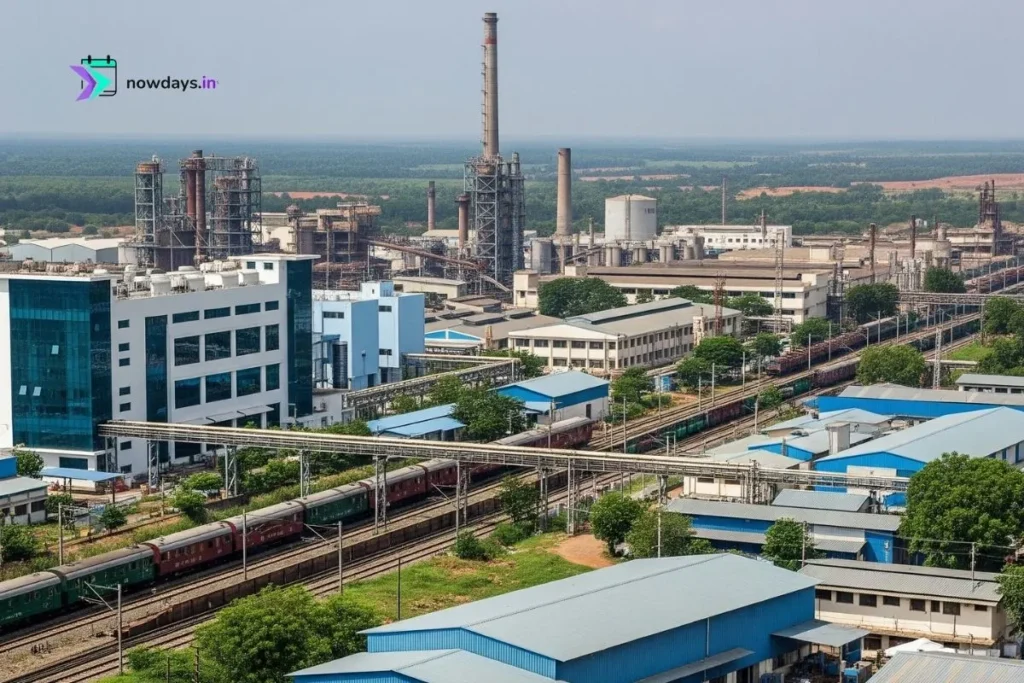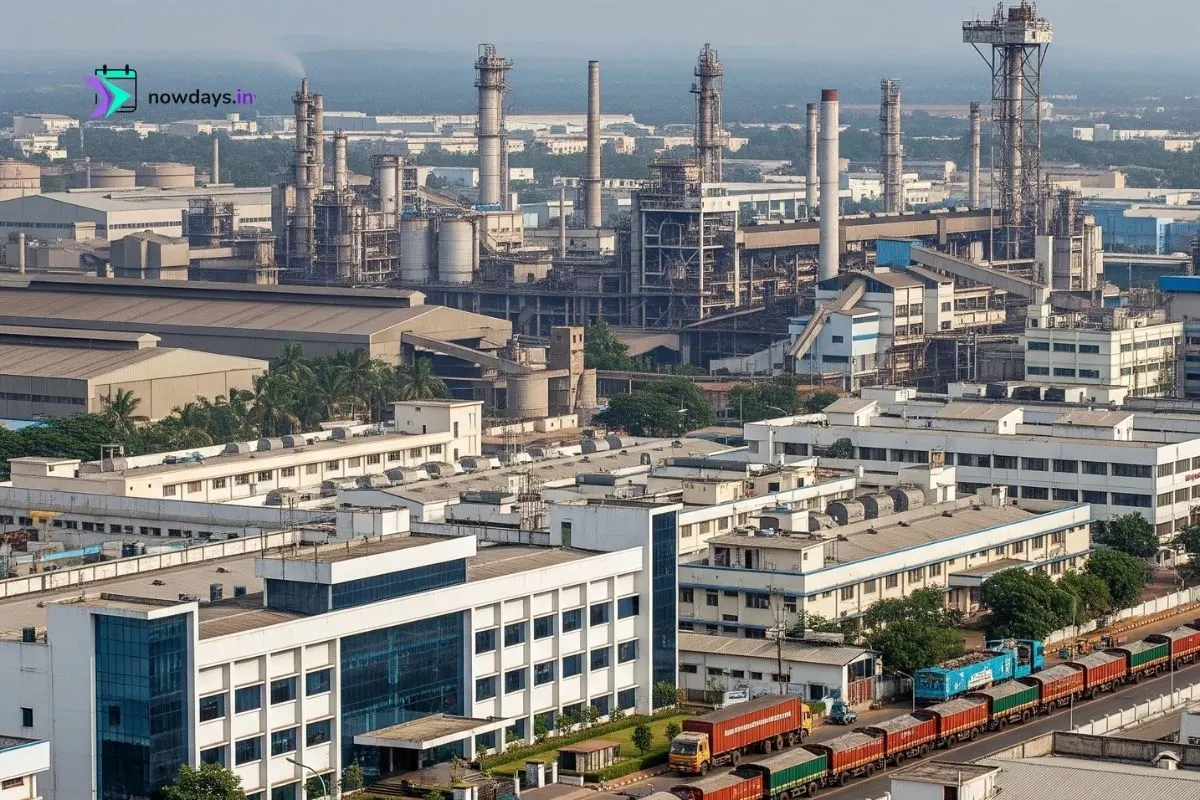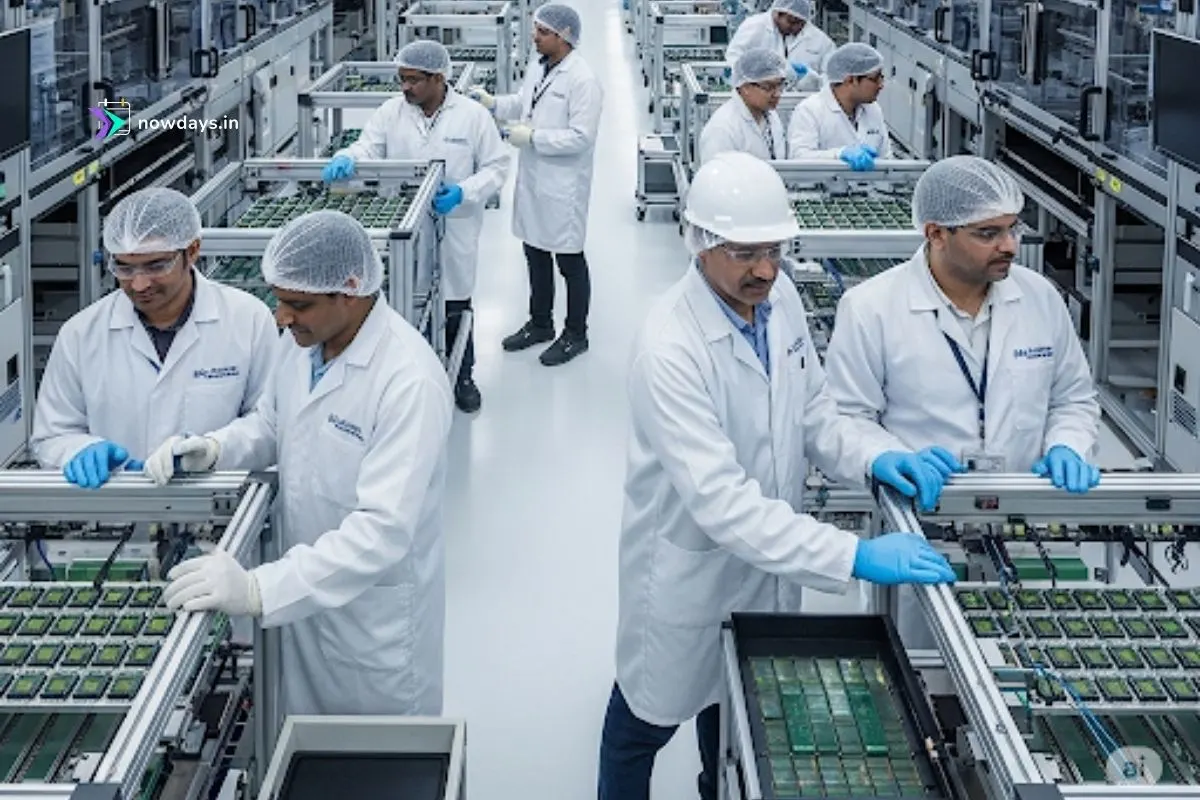Tamil Nadu’s supremacy in India’s industrial ecosystem has been officially validated by the latest government data, revealing a manufacturing dominance that extends far beyond mere numbers. The state’s 39,666 factories as of 2022-23 represent not just the highest count in the nation, but a testament to a carefully orchestrated industrial strategy that has outpaced traditional manufacturing giants Gujarat and Maharashtra.
The Numbers That Tell the Story
The scale of Tamil Nadu’s manufacturing leadership becomes apparent when examined against its closest competitors. According to the Annual Survey of Industries (ASI) 2022-23, Tamil Nadu maintains a commanding lead with 39,666 operational factories, significantly ahead of Gujarat’s 31,031 units and Maharashtra’s 26,446 factories3. This represents approximately 15.66% of India’s total 2,53,334 factories, a remarkable achievement for a state that comprises only 4% of the country’s land area.

More striking is the employment intensity of Tamil Nadu’s industrial base. The state recorded 8.42 lakh mandays in 2022-23, surpassing both Gujarat and Maharashtra despite having fewer total employees than these states. With 4.81 lakh employees, Tamil Nadu achieved an impressive 1.75 average mandays per employee, compared to Maharashtra’s 1.13 and Gujarat’s **1.37 the superior engagement and productivity of Tamil Nadu’s manufacturing workforce.
Read more: NOIDA Granted Tax-Free Status Under Section 10(46A) of Income-tax Act
Beyond Factory Count: The Quality Advantage
While the sheer number of factories establishes Tamil Nadu’s quantitative leadership, the qualitative aspects of its industrial ecosystem reveal why this dominance is sustainable. The state’s manufacturing sector contributes 11.90% to India’s manufacturing GDP, placing it as the second-largest contributor after Gujarat’s 14.78%. However, this gap narrows significantly when considering the comprehensive industrial value chain.
Tamil Nadu’s factories demonstrate remarkable diversity across sectors. The state leads nationally in motor vehicle production, wearing apparel, and leather products, while ranking second in textiles, machinery, and electronic products. This sectoral diversification provides resilience against economic downturns and creates a robust ecosystem where industries support each other through interconnected supply chains.
The “Detroit of India” moniker for Chennai reflects Tamil Nadu’s automotive manufacturing prowess, housing over 1,500 factories producing automobiles and auto components8. Global giants including Hyundai, Ford, BMW, Tata Motors, and Ashok Leyland have established major manufacturing operations in the state, creating an automotive ecosystem that generates cascading industrial growth.
The Strategic Infrastructure Foundation
Tamil Nadu’s factory proliferation stems from deliberate infrastructure investments that create competitive advantages over other states. The state’s four major ports (Chennai, Ennore, Tuticorin, Karaikal) and four international airports provide unmatched connectivity for global trade. This logistics infrastructure reduces transportation costs and delivery times, making Tamil Nadu an attractive location for export-oriented manufacturing.
The industrial corridor strategy has been particularly effective. Tamil Nadu is the only state in India to have all its districts covered under industrial corridor projects, including the Chennai-Bengaluru Industrial Corridor (CBIC) and the Chennai-Kanniyakumari Industrial Corridor (CKIC). These corridors integrate modern road and rail connectivity with specific investment regions and comprehensive industrial infrastructure.
The state’s power generation capacity of 37,514 megawatts provides reliable energy supply to manufacturing units, while the per capita electricity supply of 1,588.7 kilowatt-hours ensures consistent operations. Though Gujarat leads in power generation, Tamil Nadu’s focused industrial power allocation strategy ensures manufacturing units receive priority supply, maintaining operational efficiency.
The Human Capital Edge
Tamil Nadu’s industrial success rests fundamentally on its human capital development strategy. The state produces over one million graduates annually, with the highest number of technical universities and over 2,400 colleges in India. This educational infrastructure creates a continuous pipeline of skilled workers aligned with industrial requirements.
The state’s 475 Industrial Training Institutes (ITIs) and specialized Apex Skill Development Centres (ASDCs) provide vocational training directly matched to industry needs. The “Naan Mudhalvan” flagship skilling program has benefited over 28 lakh students, creating a workforce capable of handling advanced manufacturing technologies.
Significantly, Tamil Nadu’s Labor Force Participation Rate (LFPR) of 64.6% for individuals aged 15-59 years exceeds the national average of 64.3%. The state’s inclusive employment policies encourage higher women’s participation in the workforce, expanding the available talent pool and creating a demographic advantage over competitors.
Read more: How PayPal and NPCI Are Taking India’s UPI to the World Stage
Policy Innovation and Government Support
The Tamil Nadu Industrial Policy 2021 demonstrates the state’s strategic approach to manufacturing growth. The policy targets 15% annual growth in the manufacturing sector, aims to attract ₹10 lakh crore (US$135 billion) in investments between 2021 and 2025, and plans to create employment opportunities for 20 lakh (2 million) people.
The policy’s incentive structure is particularly attractive to manufacturers. The Investment Promotion Subsidy offers 100% SGST reimbursement on manufactured products for 15 years, along with fixed capital subsidies and payroll subsidies for high-value employment. For jobs paying above ₹1 lakh per month, the state provides payroll subsidies of 30% in the first year, 20% in the second, and 10% in the third year.
Tamil Nadu’s single-window clearance system and digitisation of Government to Business (G2B) interface reduce bureaucratic delays and compliance costs. The state’s business-friendly ranking and proactive investment promotion have attracted 893 MoUs with domestic and international companies since 2021, generating ₹10,07,974 crore in investment commitments.
Sectoral Specialization and Industrial Clusters
Tamil Nadu’s factory dominance stems partly from its successful industrial clustering strategy. The state has developed separate manufacturing clusters for automobiles and components, electronics, IT, textiles, aerospace, and food processing. This clustering approach creates economies of scale, facilitates knowledge transfer, and reduces operational costs for manufacturers.
The textile sector exemplifies this clustering success, with Coimbatore, Tirupur, Salem, and Erode forming integrated textile manufacturing hubs. Tamil Nadu accounts for one-third of India’s textile businesses, with 45% of spinning capacity and 10% of handloom capacity. The state’s textile cluster produces everything from raw cotton to finished garments, creating a complete value chain.
In electronics manufacturing, Tamil Nadu has emerged as a major hub, with exports surging from $1.26 billion in 2021 to over $12.6 billion currently. Companies like Foxconn employ over 40,000 workers in the state, while recent investments by Apple supplier network companies reinforce Tamil Nadu’s position in global electronics supply chains.
The Gujarat and Maharashtra Comparison
While Gujarat and Maharashtra remain formidable industrial competitors, their development models differ significantly from Tamil Nadu’s approach. Gujarat’s industrial strategy emphasizes capital-intensive mega projects and large-scale manufacturing units, particularly in petrochemicals, chemicals, and energy sectors. The state’s 28,479 factories generate 18% of India’s total industrial output despite being 25% fewer than Tamil Nadu’s factory count.
Read more: More than 50% of billionaires in India are of Gujarati origin
Gujarat’s Special Investment Region Act and focus on “prestigious units” above ₹3 billion investment have attracted companies like Reliance, Adani Group, Tata, and Essar. However, this capital-intensive approach creates fewer jobs per unit of investment, with Gujarat employing 1,589,730 factory workers compared to Tamil Nadu’s 2,209,217 workers.
Maharashtra’s industrial landscape combines financial services dominance with diverse manufacturing. The state’s 25,610 factories benefit from Mumbai’s financial ecosystem and established industrial infrastructure. However, Maharashtra has experienced factory count decline in recent years, losing over 3,500 units between 2013-14 and 2019-20 while Gujarat and Tamil Nadu expanded.
Maharashtra’s gross value addition (GVA) of 16.33% leads the country, followed by Gujarat’s 14.78% and Tamil Nadu’s 10.33%. However, Tamil Nadu’s lower GVA per factory reflects its focus on labor-intensive manufacturing and MSME development, creating more distributed economic benefits and employment opportunities.
The MSME Ecosystem Advantage
Tamil Nadu’s factory proliferation is significantly driven by its robust Micro, Small, and Medium Enterprise (MSME) ecosystem. The state has 35.56 lakh Udyam-registered MSMEs, ranking second nationally in MSME count. These enterprises form the backbone of Tamil Nadu’s industrial diversity, supplying components to large manufacturers and creating employment across skill levels.
The state’s MSME policy provides capital subsidies, interest subsidies, and market linkage support to small manufacturers. SIDCO (Small Industries Development Corporation) maintains a combined land bank of 40,000 acres with SIPCOT, of which 3,500 acres remain available for industrial allocation. This land availability at competitive rates enables MSME growth and factory establishment.
Tamil Nadu’s 4.95 million SMEs in 2015-16 employed 9.67 million people, demonstrating the labor-intensive nature of the state’s manufacturing base. This contrasts with Gujarat’s 3.32 million SMEs employing 6.12 million people, highlighting Tamil Nadu’s focus on employment generation over capital intensity.
Export Orientation and Global Integration
Tamil Nadu’s factory ecosystem is deeply integrated with global markets, making it more resilient and competitive than purely domestic-focused manufacturing. The state leads India in exporting engineering goods, electronics, ready-made garments, cotton yarn, handloom products, and leather goods. This export orientation drives quality improvements, technology adoption, and international best practices across the manufacturing sector.
The state’s Foreign Direct Investment (FDI) inflow increased from ₹5,909 crore in 2019-20 to ₹20,157 crore in 2023-24, demonstrating growing international confidence in Tamil Nadu’s manufacturing capabilities. Global companies establish factories in Tamil Nadu not just to serve the Indian market but to export worldwide, leveraging the state’s logistics advantages and skilled workforce.
Recent major investments include Saint Gobain’s ₹3,400 crore commitment, VinFast’s electric vehicle plant, and Hitachi’s largest Global Technology and Innovation Centre. These investments create high-value manufacturing jobs and establish Tamil Nadu as a global manufacturing hub rather than just a domestic supplier.
The Technology and Innovation Factor
Tamil Nadu’s manufacturing evolution reflects its embrace of Industry 4.0 technologies and automation. The state government has established Industry 4.0-standard labs in ITIs and polytechnics to train workers for advanced manufacturing systems. Companies like First Solar operate AI-powered solar module manufacturing facilities where employees work through computers using AI for automation and inspection.
The state’s investment in R&D infrastructure and innovation centers supports manufacturing competitiveness. IIT Madras, Anna University, and NIT Trichy provide research support to manufacturers, while government policies encourage R&D spending and technology adoption. This innovation ecosystem helps Tamil Nadu factories maintain global competitiveness and adopt cutting-edge manufacturing processes.
Challenges and Future Trajectory
Despite its manufacturing leadership, Tamil Nadu faces challenges that could impact future factory growth. Land availability in prime industrial areas is becoming constrained, pushing new factories to peripheral locations with higher logistics costs. Environmental regulations are tightening, requiring manufacturers to invest in cleaner technologies and sustainable practices.
Water scarcity poses a significant challenge for water-intensive industries, while climate change impacts require adaptations in manufacturing processes. The state’s groundwater depletion and recurring droughts necessitate water-efficient manufacturing technologies and alternative water sources.
Labor cost inflation, while still competitive nationally, is reducing Tamil Nadu’s advantage over emerging manufacturing states like Odisha, Chhattisgarh, and Assam. The state must continuously upgrade its workforce skills and productivity to maintain competitiveness against lower-cost alternatives.
The Path Forward: Sustaining Manufacturing Leadership
Tamil Nadu’s factory dominance over Gujarat and Maharashtra is not accidental but the result of strategic planning, infrastructure investment, and policy innovation spanning decades. The state’s approach of combining MSME support with large-scale manufacturing, export orientation with domestic market focus, and labor-intensive industries with technology adoption creates a balanced industrial ecosystem.
The Tamil Nadu Industrial Policy 2021 aims to increase the manufacturing sector’s contribution to 30% of GSVA by 2030, which would require adding thousands more factories across diverse sectors. The state’s semiconductor policy, electric vehicle policy, and renewable energy initiatives position it to capture emerging manufacturing opportunities.
As India pursues its $5 trillion economy goal and manufacturing-led growth strategy, Tamil Nadu’s factory ecosystem provides a proven model for industrial development. The state’s ability to create more factories than larger, more resource-rich states like Gujarat and Maharashtra demonstrates that strategic planning, human capital development, and business-friendly policies can overcome geographical and resource constraints.
Conclusion: A Manufacturing Renaissance
Tamil Nadu’s emergence as India’s factory capital represents more than statistical achievement—it embodies a comprehensive approach to industrial development that prioritizes employment generation, export competitiveness, and sustainable growth. With 39,666 factories employing 2.6 million workers and generating 8.42 lakh mandays, the state has created an industrial ecosystem that outperforms traditional manufacturing powerhouses.
The state’s success in attracting more factories than Gujarat and Maharashtra reflects its unique combination of skilled workforce, strategic infrastructure, business-friendly policies, and export orientation. As global supply chains continue evolving and India positions itself as a manufacturing alternative to China, Tamil Nadu’s factory ecosystem provides a competitive advantage that extends far beyond state boundaries.
This manufacturing leadership positions Tamil Nadu not just as a regional industrial hub but as a crucial component of India’s global manufacturing competitiveness. The state’s ability to continuously attract new factories while maintaining high employment levels and export growth demonstrates a sustainable model for industrial development that other states increasingly seek to emulate.
The question is no longer why Tamil Nadu has more factories than Gujarat and Maharashtra, but how other states can replicate this successful formula for manufacturing-led economic growth in an increasingly competitive global landscape.







